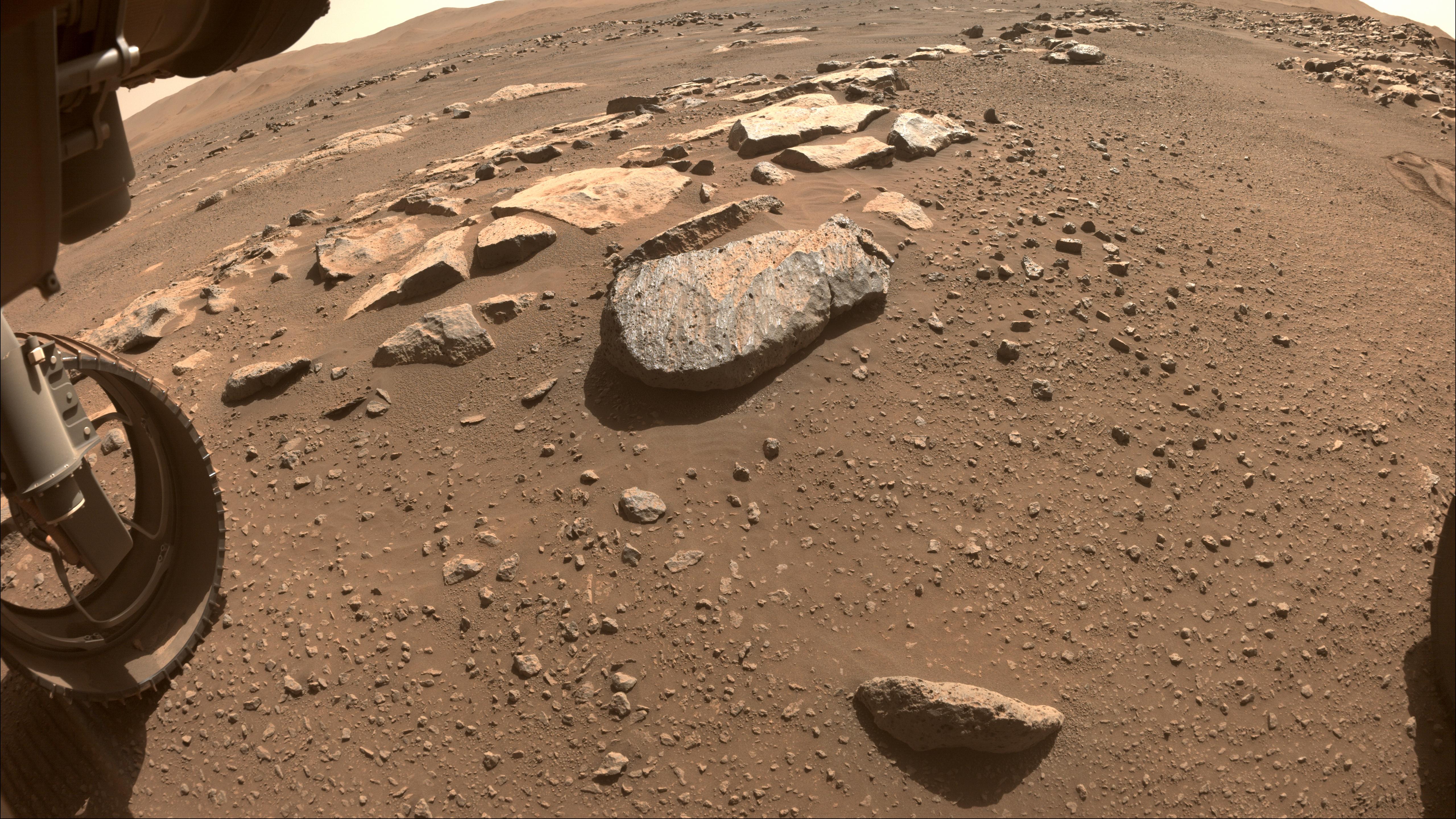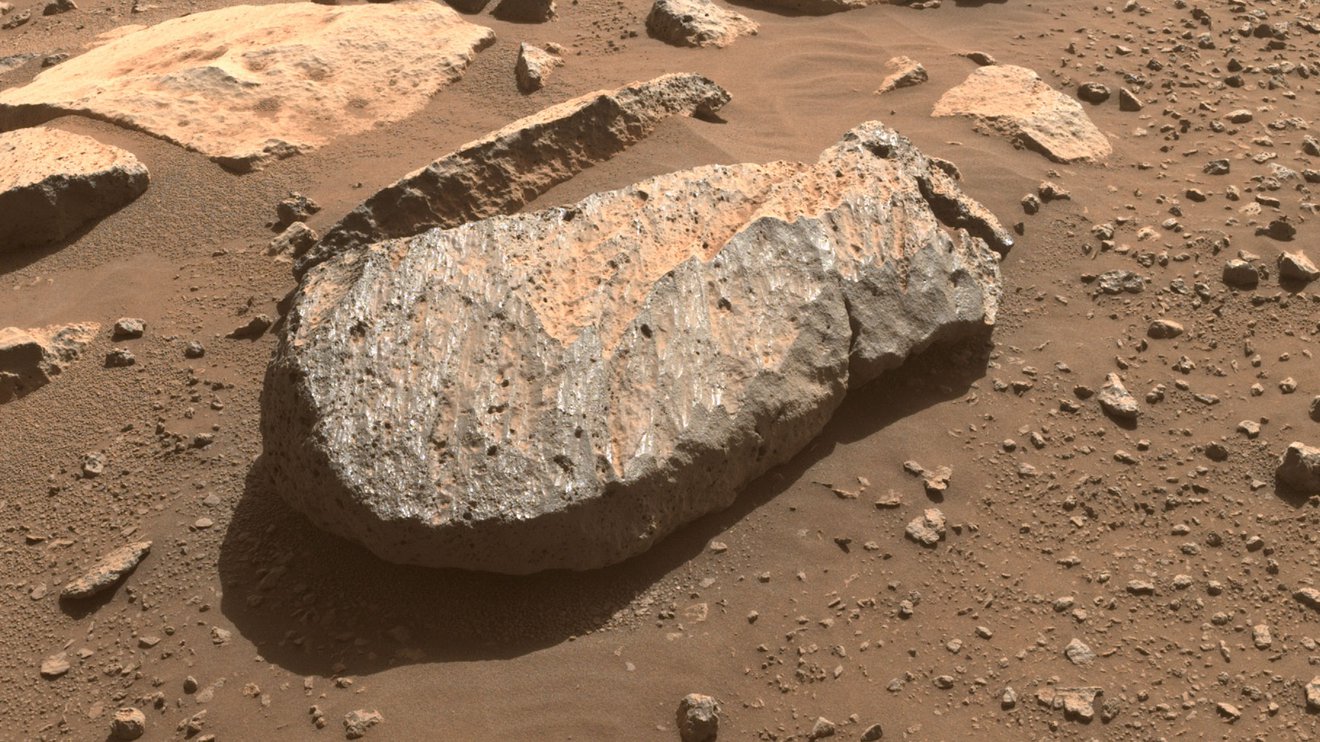Perseverance Mars rover gearing up for 2nd rock sampling attempt (photos)

NASA's Perseverance rover will soon try again to snag its first Mars sample.
Perseverance landed inside the Red Planet's Jezero Crater this past February, on a mission to hunt for signs of ancient Mars life and collect dozens of drilled samples for future return to Earth. On Aug. 6, the car-sized robot attempted to grab the first of those samples, but things didn't go according to plan: The rock Perseverance drilled into turned out to be surprisingly soft, breaking into crumbly bits that didn't make it into the sampling tube.
Since then, the rover has cruised 1,493 feet (455 meters) away to a craggy ridge the mission team calls "Citadelle" (French for "castle"), which seems to offer greener sampling pastures.
Related: Where to find the latest Mars photos from NASA's Perseverance rover
"The ridge is capped with a layer of rock that appears to resist wind erosion, a sign that it's more likely to hold up during drilling," officials with NASA's Jet Propulsion Laboratory (JPL) in Southern California, which manages Perseverance's mission, wrote in an update Thursday (Aug. 26).
The rover team has spotted a particularly inviting target at Citadelle — a rock dubbed "Rochette." Over the coming days, Perseverance will use a tool at the end of its 7-foot-long (2.1 m) robotic arm to abrade the rock, allowing mission team members to get a look at its subsurface. If they like what they see, next week they'll command Perseverance to drill Rochette and collect a sample, which will hopefully be retained in one of the rover's 42 remaining tubes.
And the mission team has added a step in the sampling process for this attempt, to make sure Perseverance doesn't sock away another empty tube. After drilling and sampling Rochette, the rover will pause, giving the team time to review photos of the tube captured by Perseverance's powerful Mastcam-Z imaging system. Perseverance will seal the tube only if those photos show that it does indeed contain a sample, NASA officials said.
Breaking space news, the latest updates on rocket launches, skywatching events and more!
All of that being said, the sealed empty tube from the Aug. 6 try is far from a disaster. Perseverance still has more than 40 other tubes left, after all. And the mission team had planned to collect an empty tube at some point during the mission anyway, so researchers here on Earth could study a pristine sample of the Martian atmosphere.
"By returning samples to Earth, we hope to answer a number of scientific questions, including the composition of Mars' atmosphere," Perseverance project scientist Ken Farley, who's based at the California Institute of Technology in Pasadena, said in Thursday's update. "That's why we're interested in an atmospheric sample along with rock samples."
NASA and the European Space Agency are partnering to bring Perseverance's samples back to Earth. The Martian material could land here as early as 2031, if everything goes well.
Mike Wall is the author of "Out There" (Grand Central Publishing, 2018; illustrated by Karl Tate), a book about the search for alien life. Follow him on Twitter @michaeldwall. Follow us on Twitter @Spacedotcom or Facebook.

Michael Wall is a Senior Space Writer with Space.com and joined the team in 2010. He primarily covers exoplanets, spaceflight and military space, but has been known to dabble in the space art beat. His book about the search for alien life, "Out There," was published on Nov. 13, 2018. Before becoming a science writer, Michael worked as a herpetologist and wildlife biologist. He has a Ph.D. in evolutionary biology from the University of Sydney, Australia, a bachelor's degree from the University of Arizona, and a graduate certificate in science writing from the University of California, Santa Cruz. To find out what his latest project is, you can follow Michael on Twitter.

